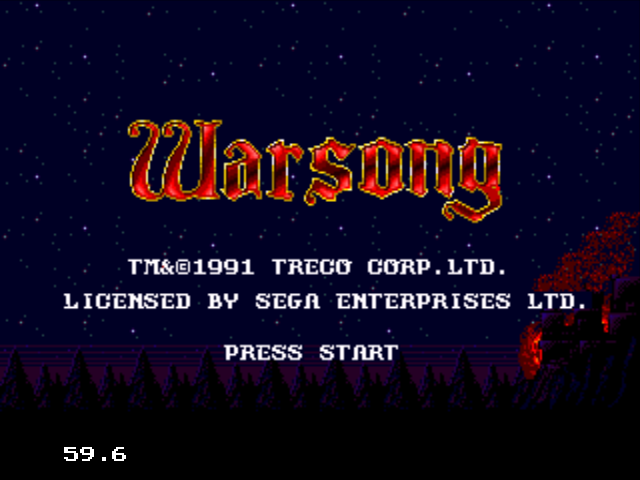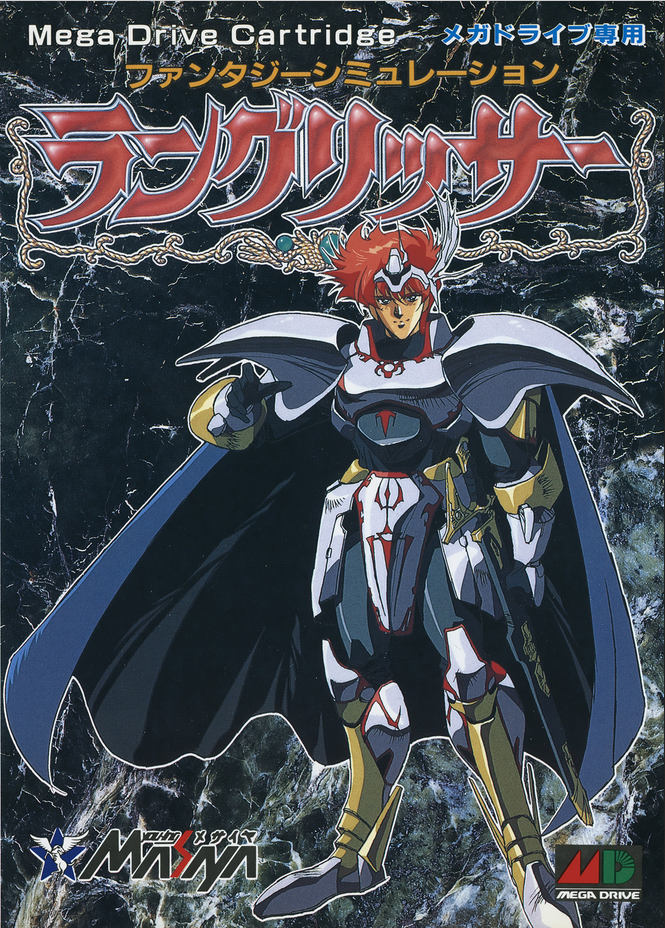
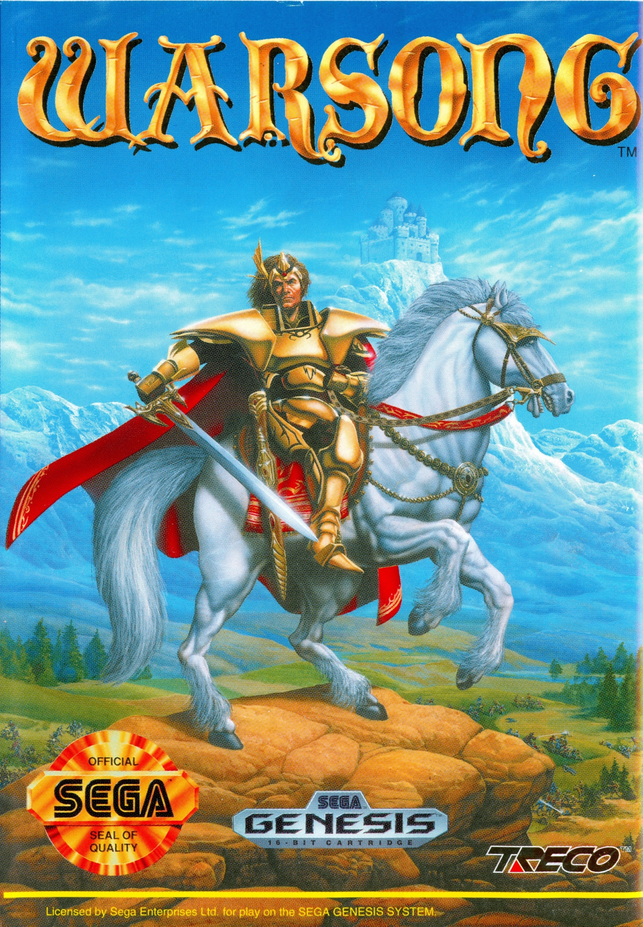
PUBLISHER: Masaya (Japan), Treco (US)
DEVELOPER: Team Career (aka CareerSoft)
RELEASE DATE: 04/26/91 – (JP), 03/1992 – (US)
For a console whose initial primary focus was arcade ports, the Genesis / Mega Drive sure received a lot of deep strategy titles in its first couple years on the market. Games like the groundbreaking RTS Herzog Zwei, the forgettable Warrior of Rome, and the overwhelming Bahamut Senki stand out amid the endless shoot-em-ups. Three games may not seem like a large amount, but I’m not including games I haven’t covered yet, like the Shining Force games, Dune II, Warrior of Rome II,and the inevitable Koei titles.
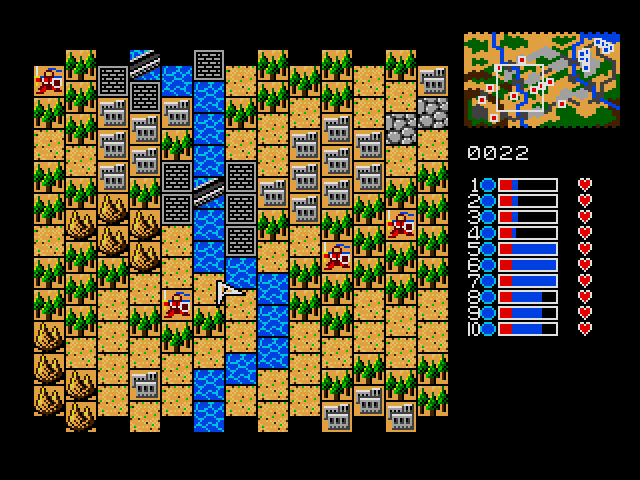
Strategy games aren’t a problem in and of themselves. When it comes to reviewing games in a timely fashion, however, strategy isn’t my favorite genre. The experience is typically slow-paced (Herzog Zwei and other forthcoming RTSes aside) and involve reading super-long manuals/FAQs to figure out what you’re supposed to do. You scroll through countless menus with a wide variety of options, most of which you’ll never use unless you really want to customize your experience. These are common features of the genre, neither good nor bad. Unfortunately, when you’re trying to produce hashtag “content” on a frequent basis, strategy games tend to slow you down.
And with that preamble, we arrive at Warsong, a tactical strategy/RPG that definitely slowed me down. The game contains 19 scenarios, 30+ hours of gameplay, and a myriad of ways for battles to collapse around you.
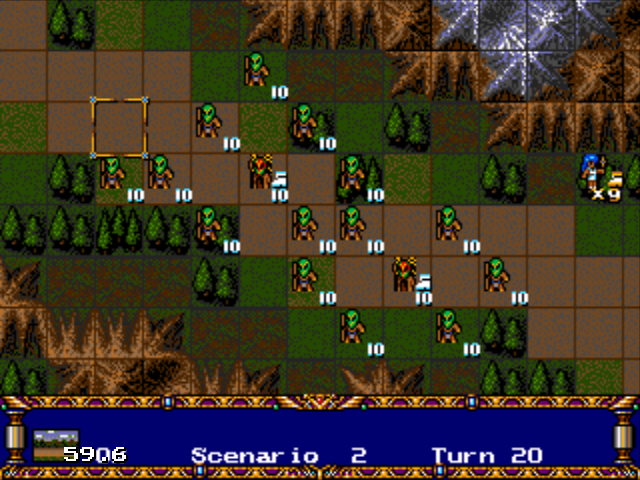
If you’ve played any Fire Emblem game or Advance Wars, you’ll understand what Warsong demands of you. You control a Commander (or Commanders, depending on the Scenario) of varying classes – Fighter, Cleric, etc. – and your mission is to clear whatever objective the scenario demands of you. Most of the time the objective is to wipe out the opposing side, but occasionally, your objective is to escape out of the current area or move from one side of the screen to the other.
There is a story here between warring empires and a powerful sword named Warsong that falls into enemy hands, but I’ll be honest, none of that interested me. As with most strategy games from the early 1990s and before, we’re here for the gameplay.
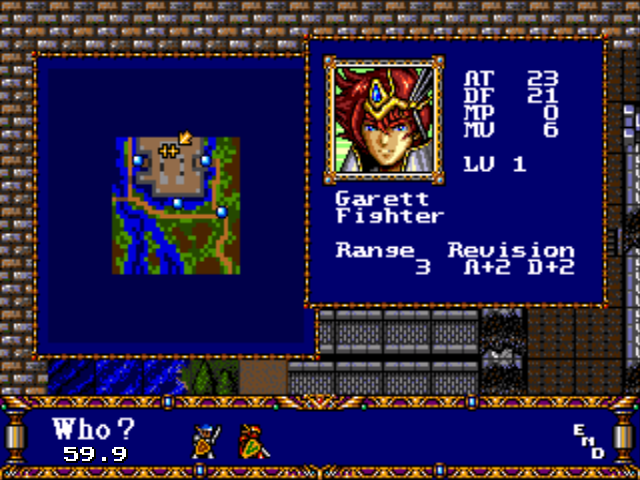
Commanders can recruit soldiers to help them fight in battle, and brother, you’re gonna need them. Enemy commanders always roll with a death squad surrounding them (usually six soldiers per commander, but sometimes more), so you’ll definitely need to bring some of your own men. The more enemies you or your soldiers kill, the quicker your commanders level up into a stronger class. Most commanders have two classes to choose from upon leveling up. For example, the main character Garrett starts as a Fighter, but once he levels up, he’s able to choose between a Knight or a Lord for his next class. This in turn upgrades his soldiers as well. If he chooses to be a Knight, his soldiers evolve into horsemen.
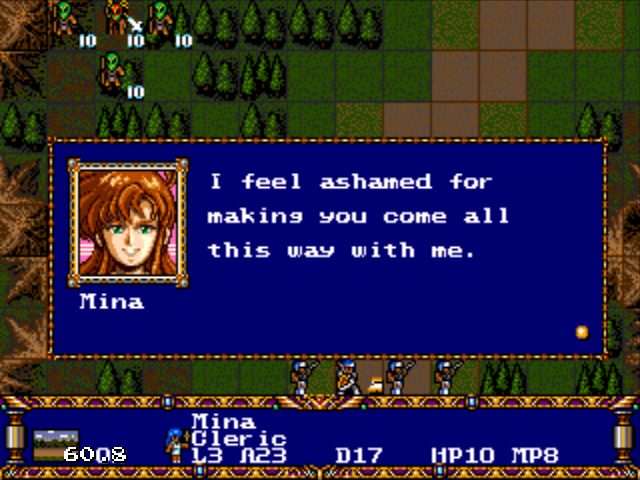
Each soldier unit contains ten individual soldiers. This goes for the enemy’s side as well. When two soldier units of opposing sides engage in combat, both sides almost always lose some of their individual soldiers. These little skirmishes play out in fast motion and are punctuated by extremely Genesis-sounding aggressive growls of war. They’re hilarious, fun to watch, and easily the highlight of the game.
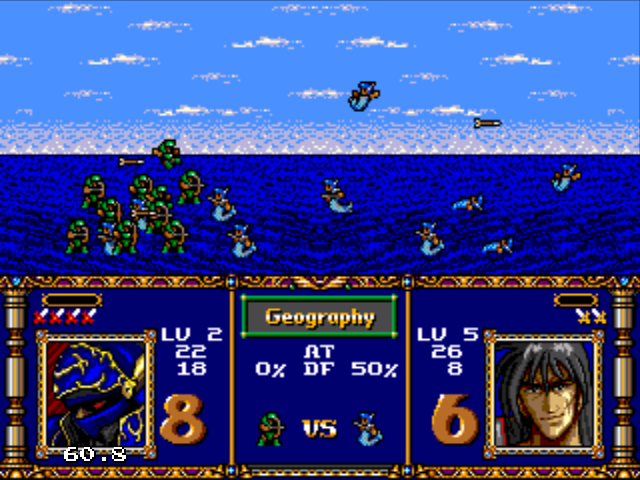
Warsong is indeed at its best when you’re engaged in combat. The battles are fast-paced and often thrilling, despite them being completely RNG-based. Also, when units from both sides are intertwined on the map, discerning where to move each unit next for maximum impact is a delightful brain workout.
Moving each unit around the map, though, is a slog, even on the fastest setting. In most scenarios, each commander you control should have eight soldier units with them, the maximum amount. This means that, for each turn, you’ll have to move as many soldier units as you have with you to specific areas on the map. Moving each unit manually slows the game’s pace down to a crawl, particularly when the enemy is on the complete opposite end of the map (the latter happens often). The game will automatically move units around the map for you if you so choose or if you don’t move them manually during your turn. Strangely, though, the game, left to its own devices, often moves soldiers to dangerous locations, if not certain death. Whose side are you on anyway, Warsong?!
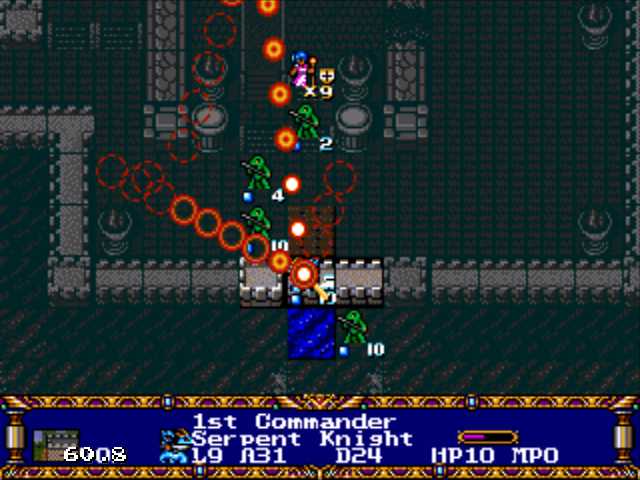
As I played Warsong, many questions came to mind. Why can’t the units move faster? Why aren’t these scenarios shorter? Why are there 19 scenarios when everyone of them is, bare minimum, an hour to play through? Why don’t I just quit Warsong already and move on to the next game on my list?
The more I played Warsong and immersed myself into its prolonged battles, the more I realized that moving faster isn’t the point. Not with this game. Not with this write-up. Not with Sega Does in general.
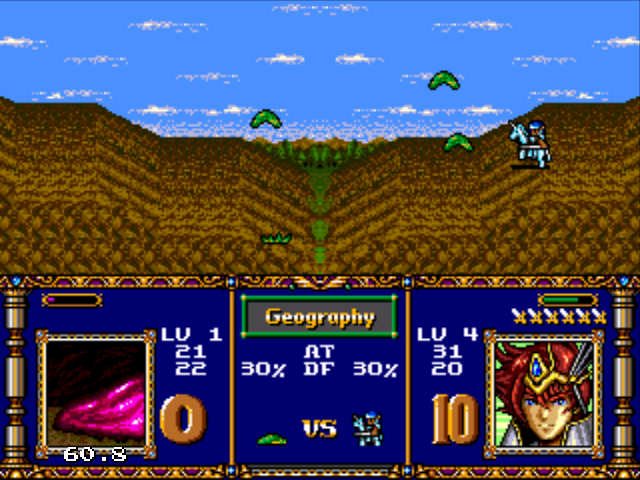
A Brief Reflection
Playing this slow-paced strategy/RPG brought to light one very important issue I’ve had with Sega Does for years: the concern that, if I didn’t rush through these games and get reviews out as quickly as I could, people would lose interest in the blog. Like if I didn’t write 2-3 reviews a week, I was failing as a blogger or whatever. Sounds ridiculous now, but the fear at the time was very real.
Before I took my first long break from the site in July 2017, I had hoped that Sega Does would grow to the point where I could earn a living from it. Grinding and hustling was the way forward, I thought, given the niche subject matter. As a result, I felt a sense of urgency with Sega Does that was only slightly relieved when I finished a review. Due to the nature of the site – gotta review all the games – there was always one more review. Then another, then another, and they never stop. Sega Does became less about the joy of playing and experiencing games in a chronological context, and more of a boring job. The cracks really show in my Gaiares review, which was my last writing for the site in July 2017 before I stopped for several months.
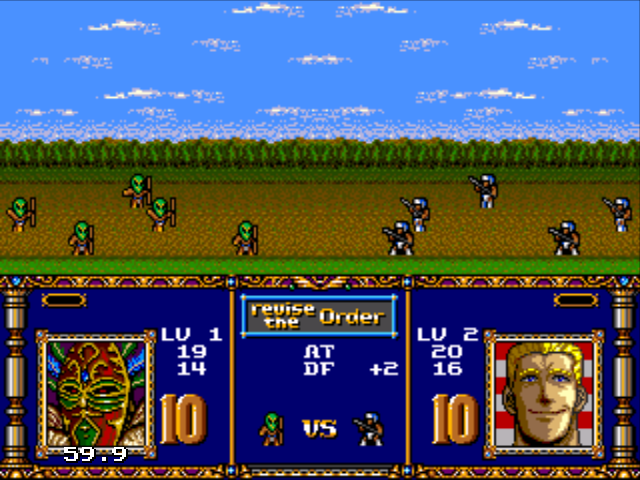
Back to Warsong
Yes, Warsong takes its time, but its languid pace helped me realize something important about the way I viewed and handled Sega Does. Putting undue pressure on myself to churn out reviews as quickly as possible only made me frustrated with the work. Warsong, in its way, taught me that it’s ok to slow down, take my time, and enjoy the process. By implementing the latter steps, who knows? I might just make it to the Saturn and beyond.
As such, I’m thankful Warsong was the first title in this three-month “don’t call it a comeback” comeback of mine. No, I did not finish all 19 scenarios. Not even close. But I played for about 10 hours and enjoyed myself for the bulk of them. This is more than I can say for Warrior of Rome or even Bahamut Senki.
No, I Didn’t Forget
Yes, all you Langrisser fans, I got you.
Warsong is the first entry in the acclaimed Langrisser series, the bulk of which came out on primarily Sega platforms. Langrisser I and II actually saw release on multiple consoles, including PC Engine CD and Super Famicom, but the fourth and fifth entries were only released on Sega Saturn. The third entry was released on Saturn, Windows, and also received a PS2 port in the mid 2000s. Exactly none of these future entries made their way to Western shores, but Langrisser II and IV English translations do exist.
WARSONG: A-
SELF-REFLECTION: PRICELESS

